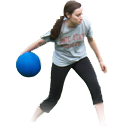
4 Telltale Marks of High Inflammation to Watch

Inflammation has become one of the fitness/wellness industry’s hot-button issues for 2019: You’ve likely seen it mentioned by a high-level athlete or influencer on their Instagram or spotted a blog post about it in recent months. It sounds scary, but occasional inflammation isn’t a bad thing; it’s your body’s healing and recovery response.
However, when you’re experiencing chronic inflammation, you’re entering into the danger zone of too little recovery, too much training (or a combination of the two). Here, we look at the actual signs and symptoms, from outside ones to blood markers to emotional symptoms that might indicate something in your training needs to change — though how you should change your training is a topic for another article.
1 YOU FEEL IT EVERYWHERE
“There are two types [of inflammation]: Acute inflammation would happen with an injury, like a bad knee, that would lead to some local inflammation,” explains Joe Wellwood, an exercise physiologist at InsideTracker. “Whole-body inflammation is where you’re inflamed over your entire body and that’s what we don’t want. It’s a good thing to have inflammation; it’s a bad thing to have it all the time.”
2 YOU’RE FEELING PUFFY
Wellwood says before you start thinking about blood markers, there are some more obvious symptoms you might be experiencing — like puffiness. If you’ve been feeling puffy in your legs or your whole body, and it doesn’t seem to go away, it can be an indicator your body is in such an inflamed stage it’s having trouble processing fluids or clearing out waste efficiently.
3 YOUR INFLAMMATION MARKERS ARE HIGH
C-reactive protein (CRP) is one of the main inflammation markers, says Wellwood. “Looking at those levels, it’s pretty obvious how inflamed you are. There are good levels of it, but high levels, especially if you haven’t just done strenuous exercise, can be a problem.
Another great indicator is your white blood cell count,” he explains. “If we see an increase in white blood cells, that means your body is fighting and trying to clear out waste. That might be from disease or infections or strenuous exercise. If you have really high inflammation, it can put you at high risk for heart issues so it’s a big deal.”
The last marker Wellwood would check is creatine kinase (CK), a muscle enzyme. “Too much exercise can lead to muscle damage, and when we have that, we see high levels of CK in the blood. It’s one of our best indicators of damaged muscles. It’s not always a bad thing, because muscle damage is a necessary part of getting stronger. But if you’re not recovering enough, that’s when those CK levels get high and stay high.”
“I’ll check CRP, white blood cells and CK, but I’ll also look at cortisol levels,” says Wellwood. “If all of those are far from the normal levels, it’s a good sign that someone might be overtrained, especially if they haven’t just done a strenuous workout. If I don’t see high cortisol, the stress hormone, I might wonder if inflammation is from something like an infection versus overtraining.”
If you have other symptoms listed here, keep an eye on all of your markers when getting blood work done: low vitamin D, for instance, has been linked to high levels of inflammation. (This is also an easy one to convince a doctor to check, and may indicate a need for further, more comprehensive testing.)
4 YOU’RE SORE FOR SEVERAL DAYS
“If you did strenuous exercise, you’ll feel inflamed and fatigued the next day. Your skin will be warmer, you’ll be a little bit uncomfortable,” says Wellwood. If it’s just for a day or two, don’t stress. But if you’re still feeling sore, overheated and uncomfortable a few days after a run or workout, it might be time to consider taking steps to lower inflammation.
“Inflammation going away is based on how long you take to recover,” says Wellwood. Specific markers like C-reactive protein (CRP) and Interleukin-6 (IL-6) have been shown to increase when inflammation is present — and it was particularly noteworthy in a study done on non-athletes participating in a particularly grueling two weeks of physical activity. What this may mean is if you’re a new runner, or new to working out, you’re more likely to have a higher inflammatory response to a week of running compared to a decade-long runner doing the same mileage.
The Arena District Athletic Club is more than just a gym, it’s a premier fitness facility located in the heart of the Arena District in downtown Columbus. We provide convenience and quality, featuring top-of-the-line equipment, top-notch personal trainers, spa-like locker rooms and a wide variety of free group fitness classes daily including Cardio, Spinning, Barre Fusion, Yoga, Boot Camp and more. We offer free 2-hour parking and convenient contract-free memberships, to fit your healthy lifestyle needs. Don’t just join, belong.




